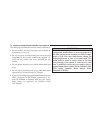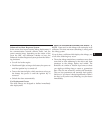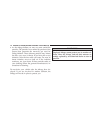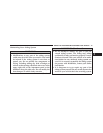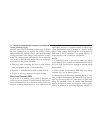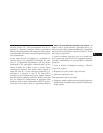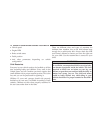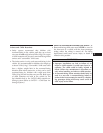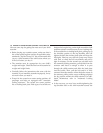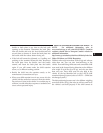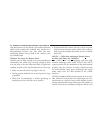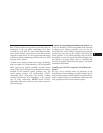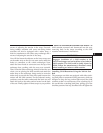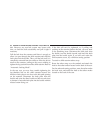
Here are some tips for getting the most out of your child
restraint:
•
Before buying any restraint system, make sure that it
has a label certifying that it meets all applicable safety
standards. Chrysler Group LLC also recommends that
you try a child restraint in the vehicle seats where you
will use it before you buy it.
•
The restraint must be appropriate for your child’s
weight and height. Check the label on the restraint for
weight and height limits.
•
Carefully follow the instructions that come with the
restraint. If you install the restraint improperly, it may
not work when you need it.
•
Except for the second row center seating position, all
passenger seat belts are equipped with “automatic
locking retractors.” The second row center position
has a cinching latch plate. Both types of seat belts are
designed to keep the lap portion tight around the child
restraint so that it is not necessary to use a locking clip.
If the seat belt has a cinching latch plate, pulling up on
the shoulder portion of the lap/shoulder belt will
tighten the belt (the cinching latch plate will keep the
belt tight). However, any seat belt system may loosen
with time, so check the belt occasionally and pull it
tight if necessary. For the second row seat belts with
the automatic locking retractors, pull the belt from the
retractor until there is enough to allow it to pass
through the child restraint and slide the latch plate
into the buckle. Then, pull the belt until it is fully
extracted from the retractor. Allow the belt to return to
the retractor, pulling on the excess webbing to tighten
the lap portion around the child restraint. For addi-
tional information, refer to ЉAutomatic Locking
ModeЉ.
•
In the rear seat, you may have trouble tightening the
lap/shoulder belt on the child restraint because the
78 THINGS TO KNOW BEFORE STARTING YOUR VEHICLE



